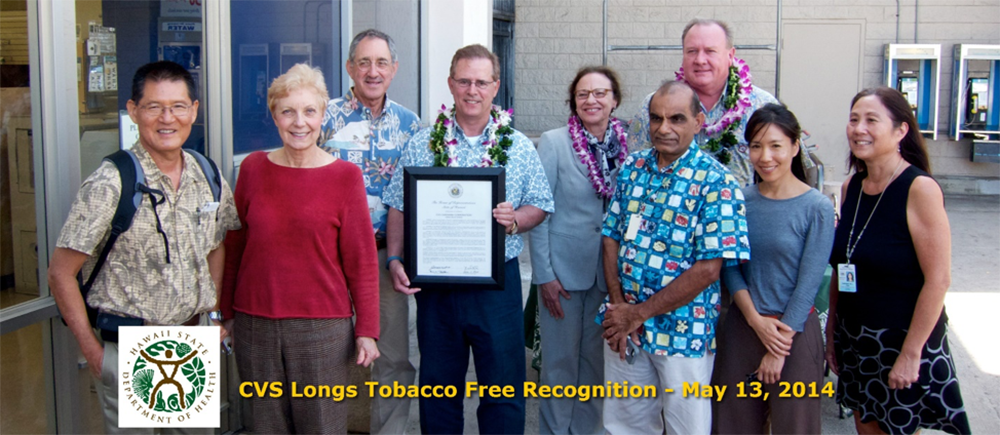
MPH Grads Work Hard to Clear the Air
Hawai‘i is a national leader in public health efforts to reduce smoking, and graduates of the UH Public Health program – devoted to their cause and savvy in their approach to their work – have been instrumental in these changes.
UH grads now make up the core of the Tobacco Prevention and Education Program (TPEP) at the Hawai‘i State Department of Health. Lila Johnson (MPH, 1994) is the program manager, and Kat Koga (MPH, 1978) and Jill Tamashiro (MPH, 2010) are health educators with the program. Two more UH grads, former branch director Julian Lipsher (MPH, 1972) and former health educator Ron Paik (MPH, 1984), recently retired from their work at TPEP.
For this group, their public health careers grew out of their desire to improve the health of local communities. "My big dream was to change the world through public service," Kat says. "Public health gave me the skills to make big changes."
Jill says that an internship she did after she earned a bachelor’s degree in occupational therapy led her to public health. "I fell in love with community health and transitioned right into the Master of Public Health program at UH Mānoa."
Tobacco use is the top cause of preventable death and disability in Hawai‘i. Lila says her early-career work with the Centers for Disease Control and Prevention spurred her ambition to change the public's view of smoking. "I wanted to work with the Hawai‘i State Department of Health to change things on a statewide level," she says.
In Hawai‘i, smoking is now banned at beaches and parks, and in public housing. The state has raised the legal age of purchasing tobacco to 21, and in all four major counties, it is illegal to smoke in a car when a child is present.
Kat, Lila, and Jill all say that the key to implementing changes at the state level has been the use of an approach that is a cornerstone of public health workers everywhere: coalition-building. Strong coalitions between public organizations, private groups, and the non-profit sector have made the key policy changes possible.
In addition, the group says that changing social norms have also been important. "Smoking is much less socially acceptable now," Kat says. "Before, non-smokers had to tolerate smoking and secondhand smoke. But now smokers have to really look hard to find a place to smoke."
Working in public health means more than trying to convince one person at a time to quit smoking. Rather, public health means trying to make changes at a population-wide level. To improve the health of everyone, public health workers work toward systemic transformation.
Lila says, "Government has a responsibility to assure the health of all people, especially the most vulnerable among us. Although Hawai‘i has a relatively low smoking rate compared to other states, some groups in Hawai‘i still have high smoking rates." The public health workers at TPEP are now working to tailor interventions to these priority populations, including LGBTQ groups, people with lower income levels, Native Hawaiians, and people with behavioral health issues.
For these UH grads, earning a Master of Public Health (MPH) degree was a very practical way to enter the field and land a job. MPH students learn all aspects of public health projects, including gathering partners, planning programs, and making programs work.
A career in public health is a way to make an impact on the whole picture of health in one's community, Jill says. Her advice for students is, "Take advantage of opportunities to volunteer and do projects in the classroom and in the community. This gives you real-world experience to which your growing public health skills can be applied."
